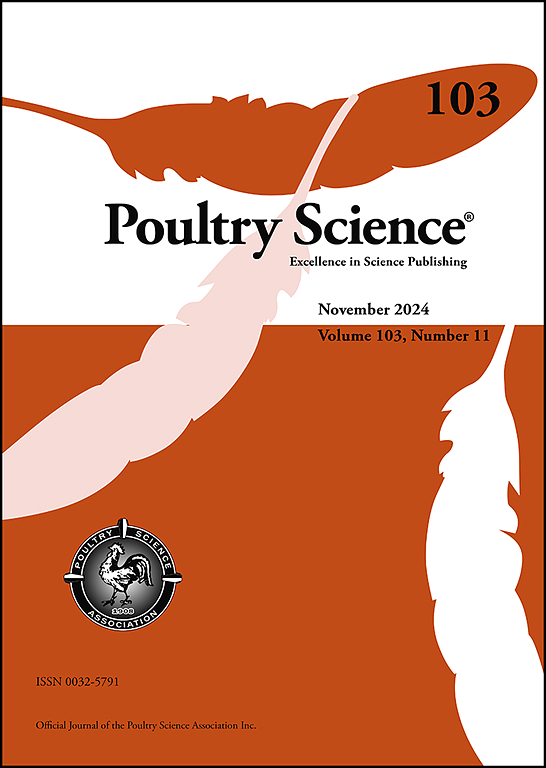The analysis of antimicrobials epidemiological cut-off values of mycoplasma gallisepticum isolated from goose
IF 3.8
1区 农林科学
Q1 AGRICULTURE, DAIRY & ANIMAL SCIENCE
引用次数: 0
Abstract
Mycoplasma gallisepticum (MG) poses a significant threat to the goose breeding industry, with antimicrobial agents commonly employed for its treatment. However, the absence of standardized criteria for antimicrobial selection complicates clinical decision-making regarding the choice and dosage of these agents, contributing to the emergence of clinical resistance. In this study, we isolated 102 clinical strains of MG from geese in Guangdong. We determined the minimum inhibitory concentration (MIC) values for various antimicrobials frequently used in MG treatment, including danofloxacin, enrofloxacin, tilmicosin, tylosin, tylvalosin, valnemulin, tiamulin, and spectinomycin. After conducting a statistical analysis of the susceptibility test results, we employed ECOFFinder to establish the wild-type cutoff values (ECOFFs) for these antimicrobials against the MG isolates. The findings revealed a significant reduction in sensitivity among the clinical isolates to the eight tested antimicrobial agents. While valnemulin and tiamulin maintained relatively good sensitivity, enrofloxacin, danofloxacin, and spectinomycin exhibited notably diminished effectiveness. The determined ECOFFs for MG isolated from geese against the aforementioned antimicrobials were 3.2, 3.2, 0.8, 0.8, 0.08, 0.05, 0.05, and 3.2 μg/mL, respectively. This study is crucial for identifying resistant strains and investigating resistance mechanisms, in addition to providing a precise assessment of the resistance levels of MG isolated from geese in Guangdong. The insights gained from this research will serve as a valuable reference for the prevention and treatment of MG infections and will promote more effective clinical strategies regarding the use of antimicrobials.
求助全文
约1分钟内获得全文
求助全文
来源期刊

Poultry Science
农林科学-奶制品与动物科学
CiteScore
7.60
自引率
15.90%
发文量
0
审稿时长
94 days
期刊介绍:
First self-published in 1921, Poultry Science is an internationally renowned monthly journal, known as the authoritative source for a broad range of poultry information and high-caliber research. The journal plays a pivotal role in the dissemination of preeminent poultry-related knowledge across all disciplines. As of January 2020, Poultry Science will become an Open Access journal with no subscription charges, meaning authors who publish here can make their research immediately, permanently, and freely accessible worldwide while retaining copyright to their work. Papers submitted for publication after October 1, 2019 will be published as Open Access papers.
An international journal, Poultry Science publishes original papers, research notes, symposium papers, and reviews of basic science as applied to poultry. This authoritative source of poultry information is consistently ranked by ISI Impact Factor as one of the top 10 agriculture, dairy and animal science journals to deliver high-caliber research. Currently it is the highest-ranked (by Impact Factor and Eigenfactor) journal dedicated to publishing poultry research. Subject areas include breeding, genetics, education, production, management, environment, health, behavior, welfare, immunology, molecular biology, metabolism, nutrition, physiology, reproduction, processing, and products.
 求助内容:
求助内容: 应助结果提醒方式:
应助结果提醒方式:


